Just one year later, the Project Crimson Trust was born. The community-based project was created by the Northland Department of Conservation, supported by New Zealand Forest Products (now Carter Holt Harvey) and focused solely on pōhutukawa. In 1996 Project Crimson expanded to include rātā, pōhutukawa’s endangered cousin. Today, through its flagship programme Trees That Count, Project Crimson helps Kiwis plant millions more native trees, of all species, as a way to fight climate change, strengthen ecosystems and grow healthier communities everywhere.
On Earth Day 2021, we reflect on the success of Project Crimson in preserving pōhutukawa and rātā and its evolution to leading fundraising for Trees That Count. Community support has gone from strength to strength, and has progressed from local to global. Trees planted 30 years ago now support their own thriving ecosystems and stamp their mark on New Zealand’s biodiversity.
Project Crimson demonstrates that the conservation actions you take today, no matter how small, have a meaningful, positive impact on our future.
Debbie Teale, Project Crimson Trust Executive Director, 1998 – 2003
How did you get involved in Project Crimson?
I was Manager Communications for Carter Holt Harvey (CHH) with partnerships and sponsorships sitting within my portfolio of work. As part of this I was a trustee of Project Crimson and not only loved the vision and purpose of the work, but I could see so much potential for scaling the work and therefore its impact. It was such a beautiful model with a cause that people believed in, a strong partnership with the Department of Conservation (DoC) and a large corporate – both of which could provide people resources and local relationships around all of New Zealand.
In 1998 when I was going to leave Carter Holt Harvey to have my daughter I was asked by the then Chairman if I would be interested in becoming the first dedicated and paid Executive Director. I jumped at the opportunity and spent the next five years running the trust from my home. It was, and still is, the best job I have ever had.
When you joined, what was your vision for Project Crimson?
What I was really keen to do was strengthen the partnership and the commitment of CHH to the brand and, really importantly, to grow its financial support. There are so many non-profits in New Zealand that struggle with ongoing committed funding so they can lay down plans beyond 12 months. We had commitment but I was sure we could increase the funding and therefore go on to do more work. One of the first things I did was approach Colenso BBDO (as it was called at the time), CHH’s advertising agency, and asked them to take the trust on as a pro bono client.
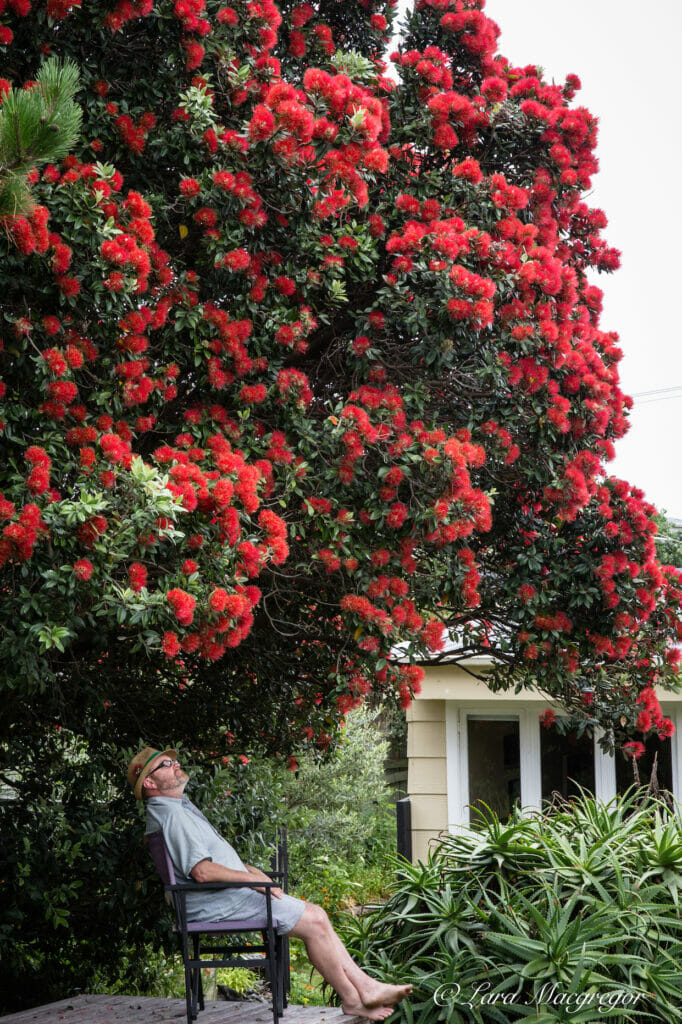
We started out by relooking at the brand and then went on to roll out a range of marketing and PR activities such as a nation-wide bill-board campaign. We also approached other partners to CHH and Colenso BBDO to help us with supplies for events such as the Ellerslie Flower Show, with the supply of Holden Rodeo utes for travelling around the country for planting events. We were able to garner heaps more support and ultimately do more work. We also looked for ways to add on activities that would mean that Kiwis would get to engage with the trees in their natural environment, and hopefully get in behind the cause; activities like the Crimson Trails which are still on the website today.
Ramping up support and finding ways that CHH would commit more and more funding each year meant we could deliver more and have more impact. The more funding we received, the more we could in turn also distribute to community groups in our annual funding round. I was strategically trying to lock CHH and its own brand into staying in for the long haul.
Pōhutukawa were facing extinction when Project Crimson was launched. The task ahead must have felt overwhelming. How did you prioritise what to work on first?
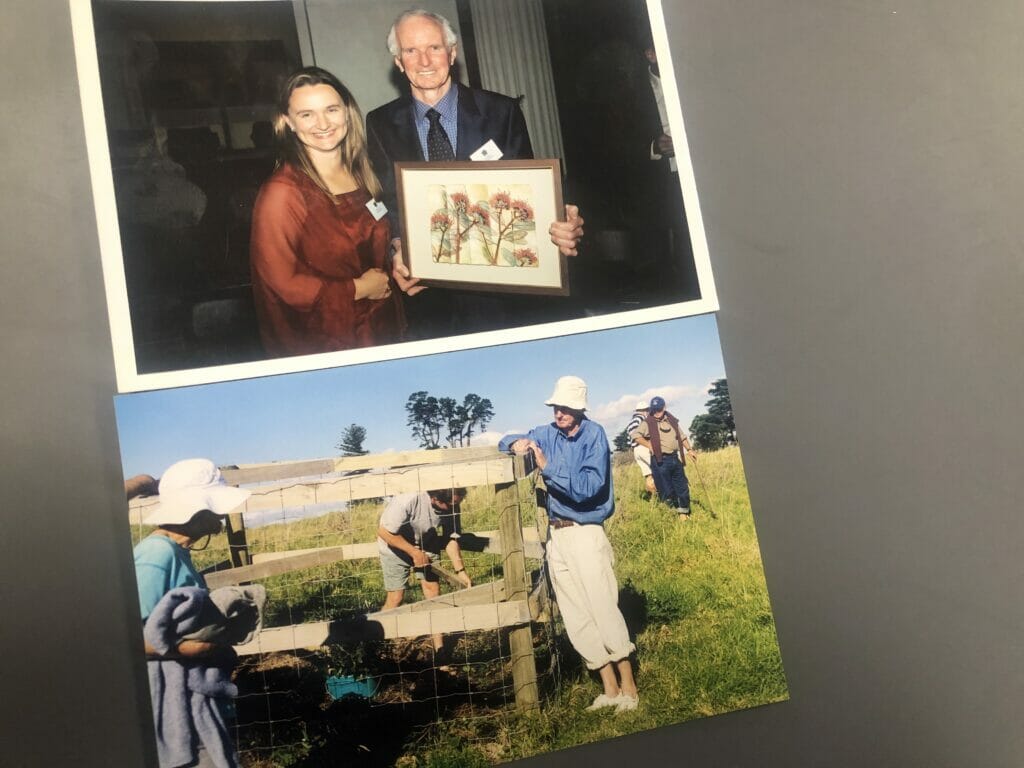
I was not there at the very start – l was lucky that there was an incredible volunteer coordinator Ted Wilson (that title undersells what he did) who had worked with the DoC and CHH teams all around the country. He had already ensured we had seed supply, nurseries raising stock, scientists leading and guiding what we needed to do, schools and community groups doing pest control and plantings. It was well established; I just came along and applied my communications and stakeholder engagement background along with my network within CHH to get more money and do more. It was so much fun and so rewarding working with awesome people that I never had trouble seeing what we needed to do next. It was a job that took over my life and I was able to take my daughter to everything, which was a bonus. Working with Ted Wilson was a bonus also. We had a ten-year celebration at the Auckland Museum and then Prime Minister Helen Clark acknowledged Ted and what he had achieved.
Project Crimson won the hearts and minds of New Zealanders. How did the project team get such strong community involvement?
We were lucky that we had two partnering organisations with established operations all around the country. So we could easily work in local communities on plantings and pest control initiatives which was vital to the Trust’s success. They also gathered seed for us that we then grew in nurseries around the country and returned to their origins. Without the volunteers on the ground this work would not have succeeded. We also had a fantastic team of trustees who worked tirelessly to help the cause. It is incredible to see that Joris De Bres and Ruud Kleinpaste are still with Project Crimson today!
What do you see as the biggest hurdle today for New Zealand’s biodiversity?
Sadly, the biggest hurdles to me are around changing land use and human activity. We are destroying habitats in rural and urban areas, and in marine environments.
Adele Fitzpatrick, current Project Crimson Trust CEO
Project Crimson has evolved from a single-species charity in the 90s to now helping hundreds of planting groups each year with free trees. Can you tell us the story behind this evolution?
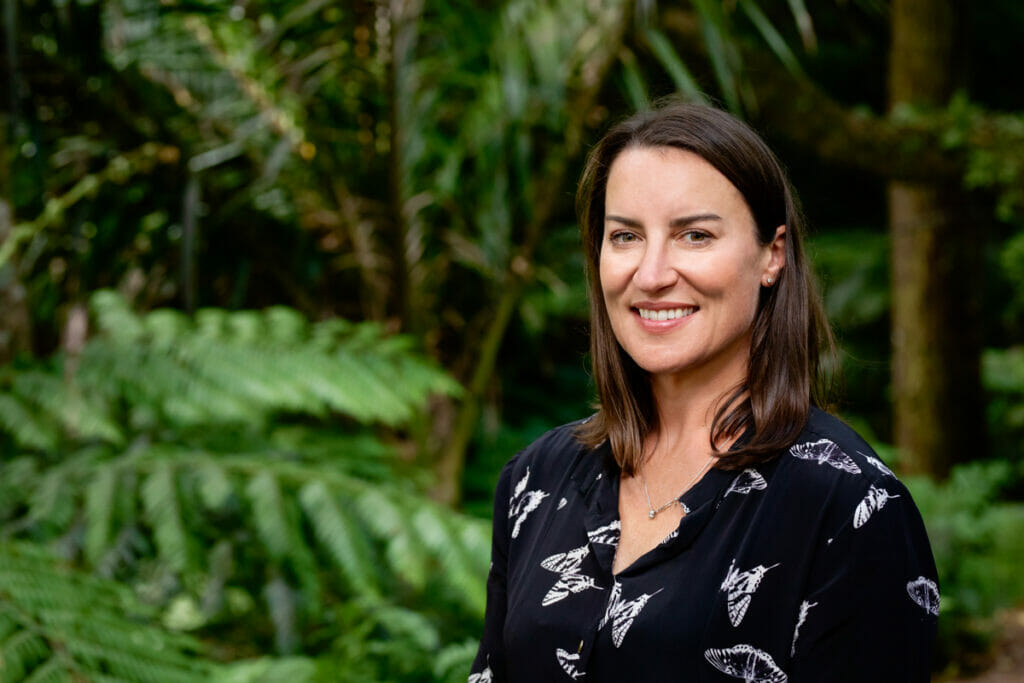
Like any good charity should do, we’d effectively done ourselves out of a job by turning around the health of pōhutukawa and rātā (until Myrtle Rust came along of course!). We got to the point where we had to ask the question, “are we done?” but the Trustees unanimously agreed that with biodiversity continuing to decline, there was still an important role for Project Crimson to do. In 2016, with support from The Tindall Foundation, we started Trees That Count which was initially focused on building a movement of all native tree planting activity in New Zealand through its live tree count. But we knew that in order to really help shift the dial we needed to increase generosity for native tree plantings. In 2018 we launched the Trees That Count marketplace: it enables anyone to gift or donate native trees which are matched to planters around the country who apply to us for free native trees to scale their amazing mahi.
Last year you conducted research on the behaviours that drive a community to take positive action for the environment. What were the standout learnings from that research?
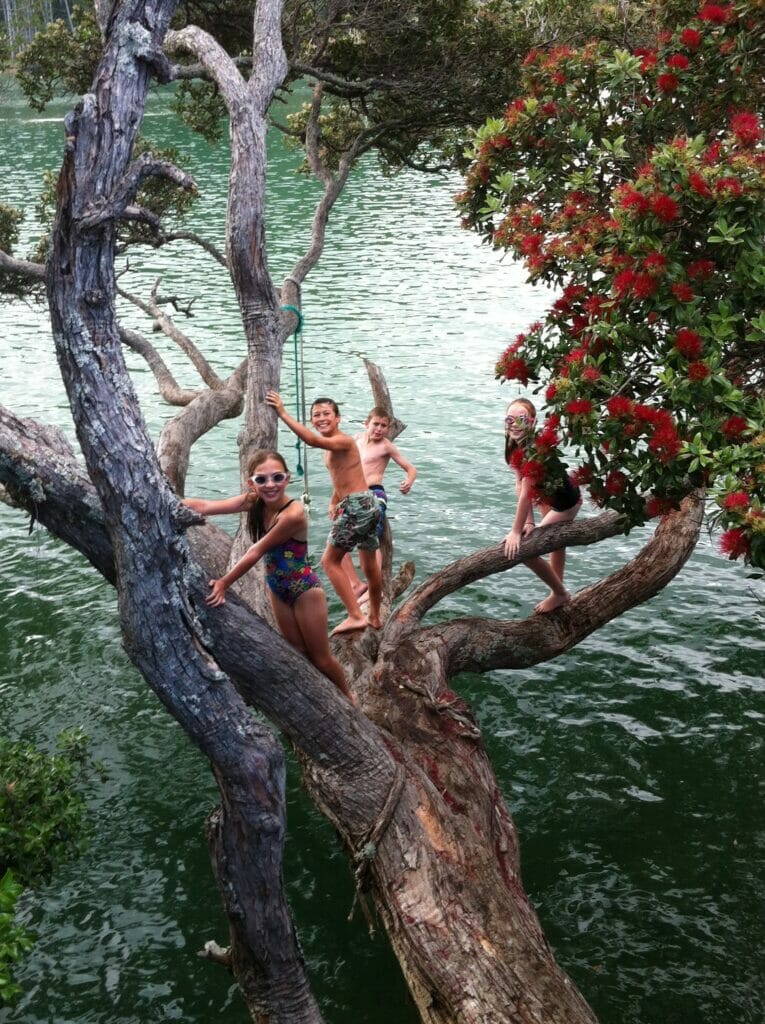
What it means to be a New Zealander
New Zealand’s native trees are viewed as an integral and special part of what it means to be a New Zealander. People see native trees as a vital component of our collective identity, and they consider our native trees to be a major example of our national heritage, similar to the role played by prominent buildings and monuments. And all this without even mentioning how significant our native rākau are in Māoritanga.
Emotional and geographical significance
When asked to recall a favourite native tree, interviewees would often tell a story of its location and reflect on an emotional connection that encompasses it, such as: ‘Christmas in the Coromandel with the pōhutukawa down by the ocean’, or ‘walking with the family and dogs under the canopy of kauri in the Waitākere Ranges’.
How do you measure the work that you do? What does success look like?
The key measures of success for me are the live data feeds on the front page of our website—we all watch them climb and celebrate each milestone together. We recently passed 700,000 trees funded: while one tree may not seem like much, together they have upscaled over 700 planting projects across Aotearoa. We are only limited by the funding we receive, and are certain that success will mean this number continues to grow exponentially every year.
Our long term goal is to see the funding and gifting of trees as the Kiwi thing to do—to celebrate a wedding, graduation or someone’s life, or to honour a memory or a place. Of course, this is not just limited to Kiwis at home, and we would also hope that all kinds of people around the world would be moved to give to NZ’s beautiful ngahere.
Native tree planting forms one critical part of the goal of greater biodiversity. Predator control is another. How does Project Crimson work alongside predator control organisations?
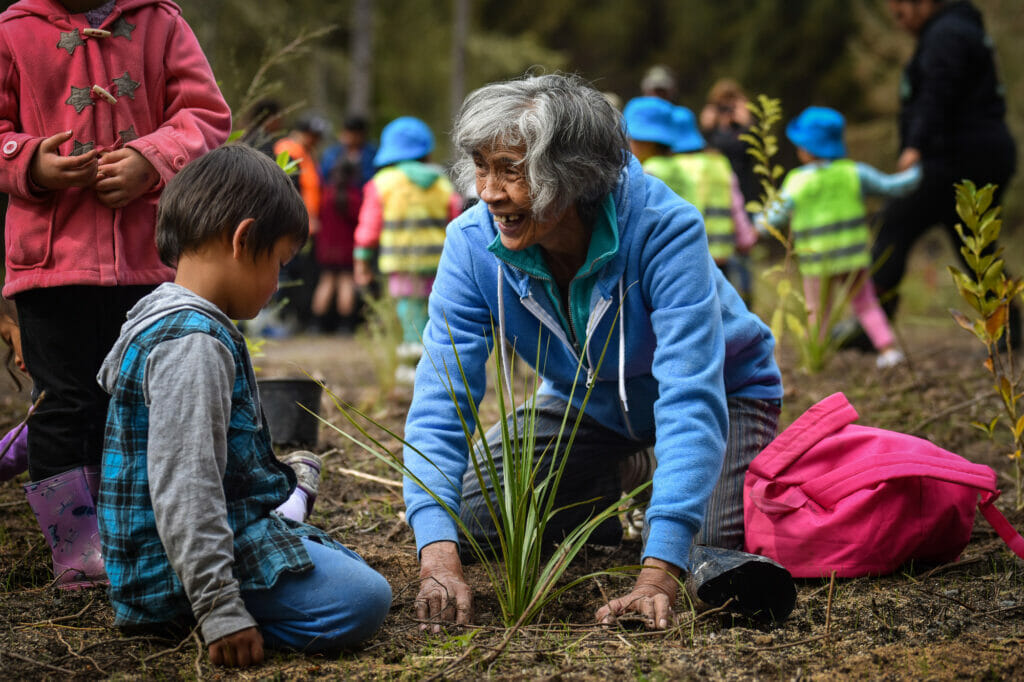
We are complementary organisations and work together to support each other’s work. New Zealand has a big pest problem and we know there’s no point in planting a native tree if an animal is going to eat it that night. Ongoing predator control is incredibly important to our native trees, and the majority of planting groups we support implement significant pest control programmes to match their planting efforts.
What are you most proud of when you reflect on the work of Project Crimson?
I’m proud of many things that we’ve achieved in a very short space of time. I love hearing about the stories of the planters we’ve helped to support: of how they’re seeing more birds or that whitebait has reappeared, and kids telling us how proud they are of their school now that it has an outdoor learning area that we helped to plant. I’m also really proud of the support we have and how often I’m told by someone that they love what we’re doing. I’m extremely proud of the care my team put into their work—it definitely shows in the way they go about things and in the output. I’m really proud of how Kiwis have embraced the concept of funding native trees for someone else to plant on their behalf—from large corporates donating tens of thousands of trees as part of their sustainability strategy, to grandparents gifting trees to their mokopuna.
If you could challenge readers to take one action as a result of reading this story, what would it be?
Consider gifting or donating a native tree! For Kiwis living offshore, the act of gifting a tree to be planted back home is such an easy way to get involved (and much faster than waiting to ship something home at the moment!). For just $10 your recipient gets emailed a beautiful gift certificate with a personalised message from you, and the tree gets planted on your behalf by one of our amazing planters. You can pick a region you’d like the tree to be planted in and it’s the perfect way to tell someone you think they’re amazing, you’re missing them or celebrate an occasion you can’t get home for.
Pōhutukawa nostalgia
Who remembers this decade-old Telecom Keep in Touch ad?
Get involved
No matter where you are, you can get involved in supporting biodiversity by gifting or donating a native tree through Trees That Count. Native trees you fund will be matched to a planting project and you’ll be kept up to date with where your tree will be planted.
HOW KEA CAN HELP YOUR BUSINESS GROW
Kea Connect
Kea Connect is a free service that will help your business grow offshore. We connect you personally with regional, sector-specific experts and peers.
Resources
Kea is here to help New Zealand businesses grow offshore. Be inspired and hear advice from businesses who have created their export path.
Jobs Portal
Looking for the right talent for your team? Reach our global Kiwi community through the Kea international job portal.

 MENU
MENU

